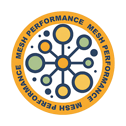How Fat Builds Up in the Liver: The Hidden Story Behind MASLD
In Metabolic Dysfunction-Associated Steatotic Liver Disease (MASLD), the liver’s normal fat handling systems go haywire. There isn’t just one issue. It’s a perfect storm involving four key problems.
Bally Parekh MSc RD
5/26/20253 min read
It’s easy to assume fat just sort of ‘magically appears’ in the liver if you overeat or drink too much. Truth is, your liver is working overtime behind the scenes, battling a four-pronged assault on fat metabolism.
And no , before you ask, sadly your body doesn’t have a special setting called ‘Monday Detox Mode’ to undo the weekend.
What Actually Happens in MASLD?
In Metabolic Dysfunction-Associated Steatotic Liver Disease (MASLD), the liver’s normal fat handling systems go haywire. There isn’t just one issue. It’s a perfect storm involving four key problems:
Too much new fat being made
Too much fat coming in from elsewhere
Not enough fat being burned
And not enough fat being shipped out
Let’s break it down.
More New Fat Being Made (De Novo Lipogenesis)
When blood sugar levels are high and insulin is elevated , thanks to insulin resistance , the liver converts excess carbohydrates into fat in a process called de novo lipogenesis (DNL).
The biggest culprit here? Fructose. That’s the sugar in soft drinks, sweets, and processed snacks. Unlike glucose, fructose goes straight to the liver and gets converted into fat quickly, bypassing some of the body’s usual checks and balances.
This process is driven by certain cellular ‘switches’ like SREBP-1c and ChREBP, which crank up fat production enzymes. The result? A fatty liver that’s being force-fed from within.
More Fat Coming In (Fatty Acid Uptake)
Insulin resistance in fat tissue means fat cells break down their stored triglycerides too easily, flooding the bloodstream with fatty acids. The liver then soaks up these free fatty acids, adding to its already overloaded fat stores.
Not Enough Fat Being Burned (Impaired Oxidation)
In a healthy liver, fatty acids can be burned for energy. But in MASLD, this fat-burning system is sluggish. Mitochondria , the cell’s power plants , aren’t working efficiently, and key regulators like AMPK are less active. The result is less fat burned, more fat stored.
Not Enough Fat Being Exported (VLDL Export Issues)
Normally, the liver packages fat into particles called VLDL to ship it out into the bloodstream. At first, the liver tries to ramp up VLDL production to cope with the overload. But it quickly gets overwhelmed.
Worse still, certain people carry genetic variants (like TM6SF2) that make it even harder to export fat, leaving it to build up inside liver cells.
What Can You Do About It?
The good news? Each of these problems offers a chance to intervene:
Reduce added sugars and fructose, especially from soft drinks and processed foods
Increase dietary fibre and nutrient-dense whole foods
Include healthy fats (olive oil, oily fish) to support fat metabolism
Prioritise regular movement and activity to boost fat-burning capacity
Summary
Your liver isn’t lazy. It’s trying to juggle an impossible workload of incoming, outgoing, and homemade fat. MASLD happens when those systems crash into each other and start failing.
And no, one celery juice won’t fix it. But smart, evidence-based changes can.
If you’re ready for a proper liver-friendly plan, built around real science, get in touch.
How can I help you?
If you’d like expert, tailored support, book a consultation today at The Liver Nutrition Clinic. I’m Bally Parekh, MSc RD, Specialist Liver Dietitian, and I’d love to help you stay stronger for longer.
How can we help
At MESH Performance, Specialist Liver Dietitian Bally Parekh MSc. RD provides evidence-based nutrition support for those living with liver conditions. Our approach focuses on:
Sarcopenia and frailty assessments
Maintaining and rebuilding muscle to reduce the risk of frailty and malnutrition
Implementing targeted dietary strategies to support overall well-being and quality of life
Optimising nutrition to prevent deficiencies and support energy level
Managing a liver condition comes with challenges, but the right nutrition can make a real difference. We're here to provide practical support—let’s get started.


Our Instagram
Get in touch
info@mesh-performance.com



